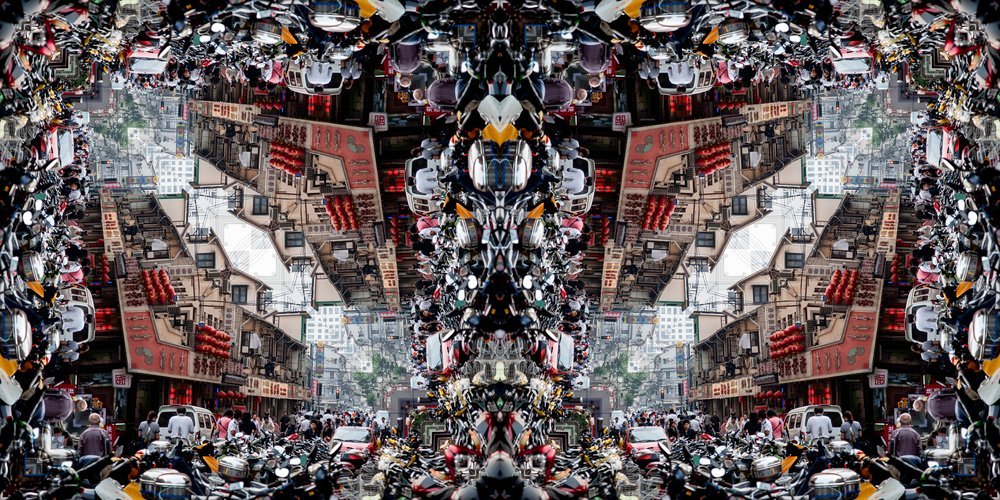What did you choose (key ideas for artmaking and big idea) and why?
My lesson plan titled, Framing the outside – What are you a witness to? addresses the idea of ‘Where/How do I fit into this world?’ for each student. I feel that this is one of the most important ideas for artists to continually address. This assignment provides a simple yet powerful outlet for students to answer the question. The lesson plan slots seamlessly into my curriculum for second-year students (High School Photo II) where a level of technical skill is expected. As this is an ongoing question in art, I would revisit the idea of ‘Where/How do I fit into this world?’ each year and catalog the images to show the individual students’ progress through photography courses. The advanced students would then have an extensive portfolio of personal artwork upon graduation.
Lesson:
Framing the outside – What are you a witness to?
Windows can be a powerful metaphor for artists to use. The idea of a window within pieces of art can be used in many ways. Is it a view in? Or is the window a view out? Can I see what other people are doing? Or are they the ones who are watching me? The window, like a door, allows for actions to be happening on each side of a division line but unlike a traditional opaque door, a window is constantly shielding us from what is on the other side while allowing both sides to see in/out.
Things to think about -
In our home, when we peek at the world through a window, we can see how we are connected to the community that surrounds us. Outside of our homes, the world is constantly moving with activity and interaction: people working, shopping, walking, animals eating, plants soaking up sunlight, automobile traffic, airplane traffic, conversations, weather patterns, etc.. It is the culmination of all these activities that connect us to our community. If you spent 24 hours sitting in front of a window in your home, what would you see? What would these exterior routines reveal to you about where you live? How would these observations make you feel about your own connection to your community? What role do you play on the other side of the window?
On the flip side of the coin… we complete everyday activities as humans within our homes: we sleep, we eat, we work, we interact, we play, and then we sleep again. If you spent 24 hours sitting in front of a window outside of your home, what would you see? What would your routine and the routine of your family reveal about you? How do these observations make you feel about your own space within your home? What role do you play on the other side of the window?
Assignment -
Using a window in your home, your camera, your choice of lenses, output sizes, and artistic techniques, capture and edit a set of 10 images from inside of your home looking out. The images should convey a sense of connection to the community around you. During the assignment review, students will be asked to use their photos to explain the answer to the question: “Where/How do you fit into your community?”
Things to remember -
The window frame itself allows for our eyes to have a physical outline to encapsulate the outside world, creating a virtual painting / photograph / video for us to imagine. The frame separates the interior inanimate walls from the moving images happening on the other side. Sometimes our windows are interrupted by bug screens, storm windows, drapes, condensation, fog, rain, sunlight, dirt, and other forms of distortion.
What artists are you drawing from? How do these artists inform artmaking in this project?
We will be studying the work of Ruth Orkin, a photographer, journalist, and filmmaker who documented life outside of her 15th story apartment through the window with her camera for decades. She would use different focal lengths (wide angle shots of Central Park as well as telephoto photos of people on the street more than 100’ below her) and she changed her point of view by filming through the window as well as move her head/upper body and the camera outside of the window to achieve different angles. Her photo collection book, 'A World Through My Window' published in 1978 is considered her greatest collection of photographs. Her technique of watching and waiting to capture scenes that moved her will be the same technique instilled in the students.
How do you anticipate your class/participants responding to this plan?
To be completely fair, I think this lesson plan will take some adjusting as it is used. I think certain students will flock to it’s absurdity and begin to grasp the idea of creating a vision of one’s self through images outside of their home while others will have a hard time seeing beyond the mundanity of the images they create for the assignment. I believe that the continuation of the assignment from class to class will help the students see the larger scale implications of using art to access how you see yourself within the smaller community and within the larger world. Being able to provide the students who are truly excited about photography with a portfolio that expresses their own understanding of themselves after 3-4 classes is something that I very much look forward to providing.






